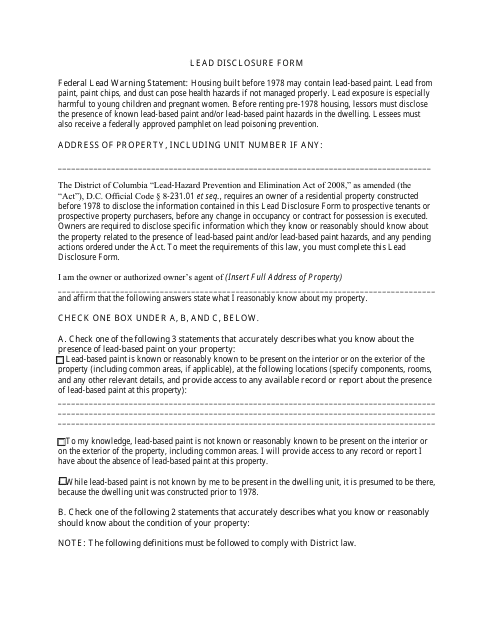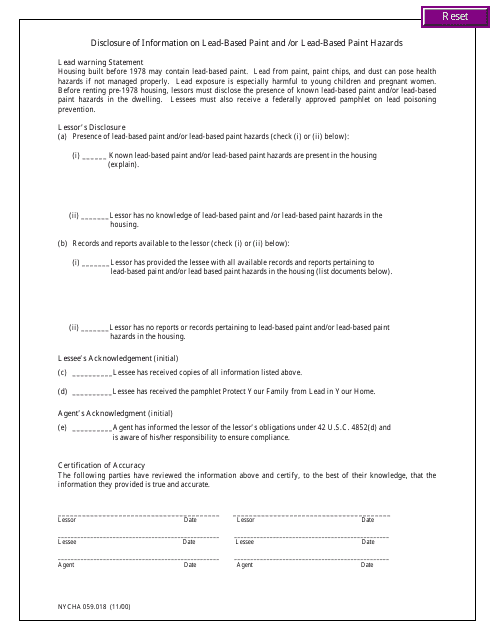Free Lead-Based Paint Disclosure Forms and Templates
What Is a Lead Disclosure Form?
If you are selling or leasing a house or apartment built before 1978, you will likely need a Lead Disclosure Form . The reason behind this requirement is that the building probably may have lead-based paint, hazardous for health.
Alternate Name:
- Lead-Based Paint Disclosure Form.
You can download our printable Lead-Based Paint Disclosure Form templates to limit your liability and comply with the legal requirement, which can help avoid penalties in the future. All parties involvedin the sale or lease are required to sign the lead disclosure statement, and they must retain a copy of the disclosures for at least three years from the date of sale or the date the lease begins as proof that they have followed the rules.
In addition, sellers and landlords must disclose any known information concerning lead-based paint, such as the location of the lead-based paint and the condition of the painted surfaces. Moreover, any records and reports on lead-based paint or lead-based paint hazards that are available to the seller or landlord must be provided to the buyer or tenant. Sellers and landlords are required to include a lead warning statement in the sale or lease contract. It is done in the form of an addendum or in the language of the contract itself to confirm that they have complied with all notification requirements.
Sellers must allow a 10-day period so that homebuyers can conduct a risk assessment or an inspection for lead-based paint hazards. Sellers and buyers may mutually agree to extend or reduce the time period for inspection. Although landlords are not required to have the property inspected, in addition to the Lead Disclosure, they must provide their tenants with the Environmental Protection Agency's (EPA) pamphlet entitled "Protect Your Family from Lead in Your Home."
What Regulation Enforces a Lead-Based Paint Disclosure?
With the purpose of protecting families from exposure to lead from paint, dust, and soil, Congress passed the Residential Lead-Based Paint Hazard Reduction Act in 1992. Disclosure of any known information on lead-based paint and its hazards is mandatory before most properties built before 1978 can be sold or leased. The EPA and the Department of Housing and Urban Development (HUD) are responsible for enforcing this Act.
Lead-Based Paint Disclosure Penalties
The EPA and the HUD have authority to impose monetary penalties on any landlord, seller, or agent who knowingly fails to comply with the lead-based paint disclosure obligation. To date, the maximum penalty is $17,834 for each violation. The Office of Lead Hazard Control and Healthy Homes (OLHCHH) has the authority to initiate a civil money penalty action against individuals who violate Title 42 of the United States Code, Section 4852d.
Related Articles
Documents:
2
This form is used for disclosing information about lead hazards in residential properties in Washington, D.C. It ensures that potential buyers or tenants are aware of any known lead-based paint or other lead hazards in the property.
This form is used for disclosing information about lead-based paint and/or lead-based paint hazards in New York City.


